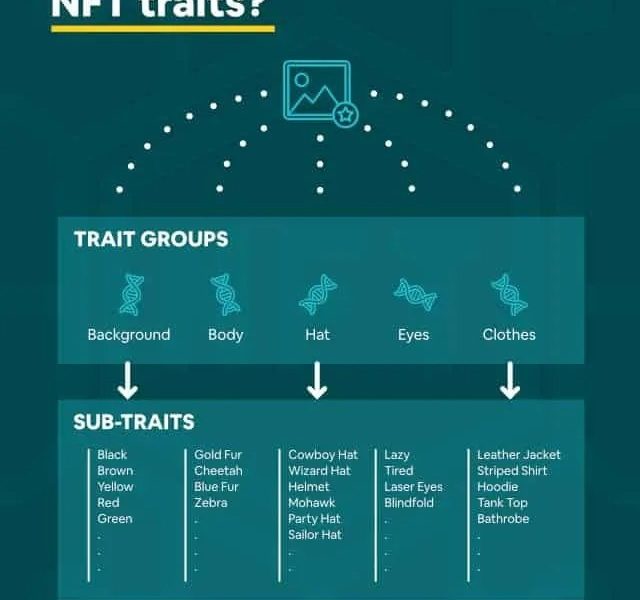Rarity Tools Explained: A Guide to Ranking Rare NFTs
Despite troublesome times, the excitement surrounding NFTs perseveres. For example, feelings of nostalgia and pride abound in digital ownership, reflecting how many feel about physical collectibles. For many collectors, minting NFTs is like opening a fresh pack of baseball cards. You never know the outcome, but there’s always the potential to pull out something rare. With the supply of most PFP projects at 10,000, the odds aren’t promising, but the potential to hit big is enough to pull in collectors.
Others are more systematic, using NFT rarity tools to “snipe” NFTs off the secondary market by finding market opportunities where an NFT’s rarity (read: market value) and list price are misaligned. Some do both.
So let’s dive deep into NFT rarity tools to uncover how rarity is calculated, how to use the tools, and the best tools to meet collectors’ needs.
What is NFT rarity?
As the name suggests, NFT rarity measures how rare an NFT is relative to the rest of the collection. Generally driven by the laws of supply and demand, rarity and market value go hand-in-hand.
In the case of most PFP projects, rarity is derived from the exclusivity of traits, or the various building blocks and attributes that form the final token. Most successful strategies include using trait groups, sub-traits, and 1/1 traits to create objective rarity.
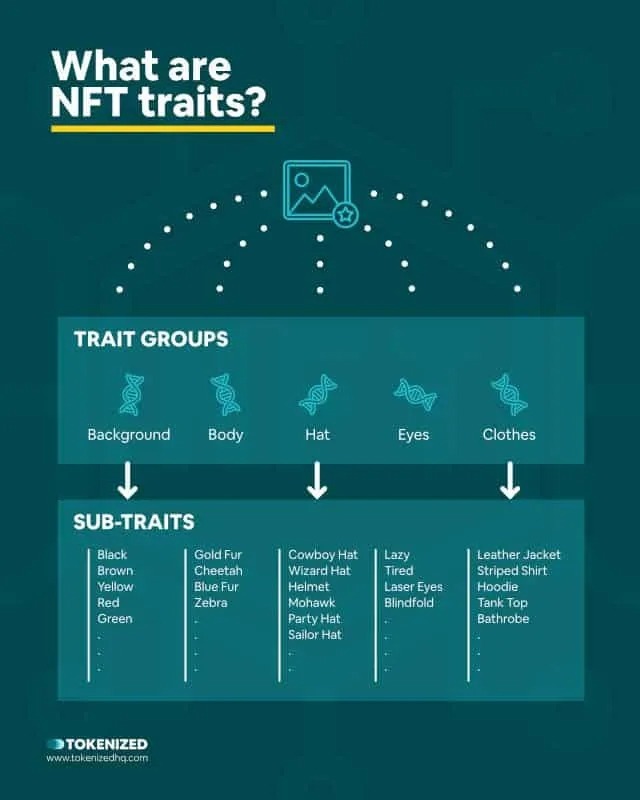
Let’s use Bored Ape Yacht Club as an example.
As shown on OpenSea, BAYC features seven distinct trait groups: Background, clothes, earrings, eyes, fur, hat, and mouth. Under each, lives a collection of sub-traits that carry varying levels of rarity based on the frequency of their occurrence across the collection. The count of total traits can also play a role, which it does in BAYC, bringing the total number of “sub-traits” to eight.
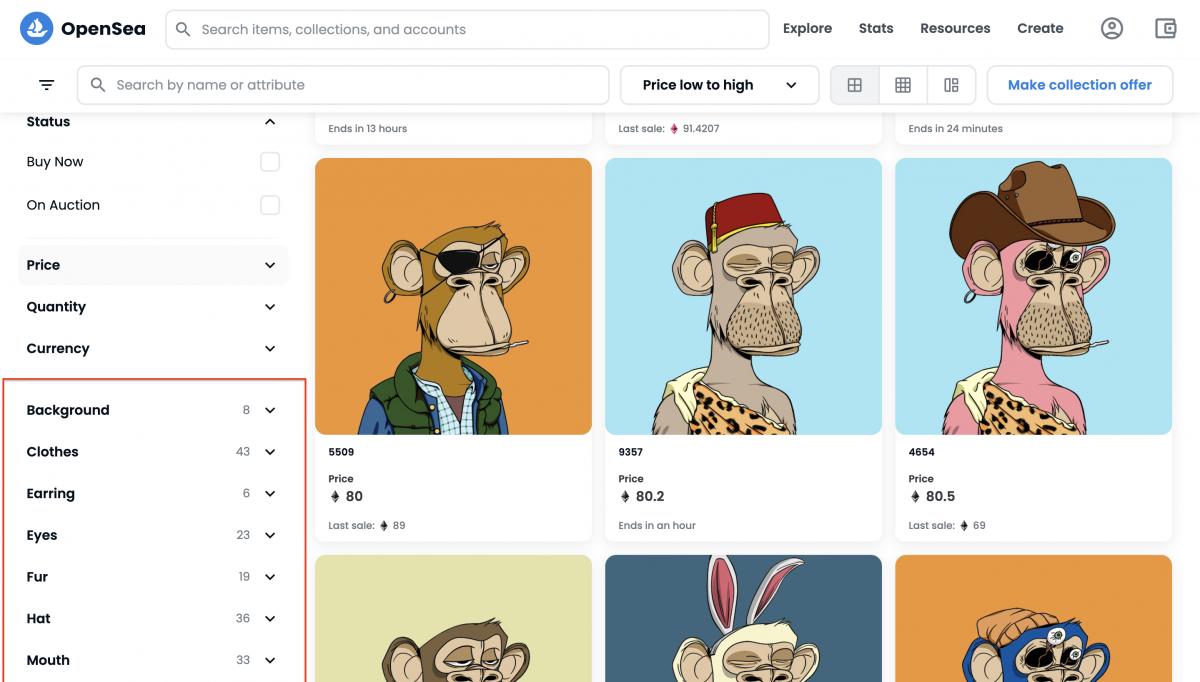
But as with anything, there are exceptions to the rule. With 1/1 or limited edition artwork, limited supply can create both rarity and scarcity, driving value and demand. In some cases, the lack of traits or the matching of traits (think: red shirt and red pants) will be perceived as having an additional value within a community. In the case of BAYC, trait count is a community-specific attribute, with all Apes garnering anywhere between four and seven traits. There are only 254 Apes with four traits in existence, thus increasing their rarity and inherent value.
But to truly explore and uncover the nuance among NFT rarity, one must use a rarity tool.
What are rarity tools?
Rarity Tools are software programs that calculate and rank NFTs based on their rarity. Think of it like a database where users can search specific tokens to see how rare they are within their relative collection, while also showing exactly what factors contribute to their rarity score. With this information, collectors can easily compare the rarity and value of individual NFTs within the same collection to better inform their purchasing decisions.
It’s important to note that each rarity tool platform has its own proprietary scoring system, so although the actual rarity rankings are the same across platforms, the rarity score itself will likely differ.
With this information, collectors can easily compare the rarity and value of individual NFTs within the same collection.
How is NFT rarity calculated?
Although there are three additional ways to calculate rarity (trait rarity ranking, average trait rarity, and statistical rarity), Rarity Score has proven to be the most accurate method.
First introduced and implemented by the founder of rarity.tools, a popular rarity tool, the formula goes as follows.

This formula was invented to solve biases within previous rarity calculation methods:
- Trait rarity ranking (ranking only on the rarest trait).
- Average trait rarity (averaging the rarity of all traits together)
- Statistical rarity (multiplying all of the trait rarities together).
As demonstrated in a rarity.tools blog post titled Ranking Rarity: Understanding Rarity Calculation Methods, if you were to compare three Apes using three different methods, you would get three completely different results. While trait rarity ranking places too much emphasis on rare traits, and average and statistical rarity doesn’t place enough, Rarity Score quickly becomes the perfect middle ground.
And now, while the formula may not be exactly the same, all rarity tool platforms have implemented their own version of Rarity Score which delivers the same accurate ranking output across all platforms.
How to use Rarity Tools
With sleek and simple user interfaces, most rarity tools are straightforward. Let’s consider Rarity Sniper, another popular rarity tool on the market. First, find a collection you’d like to explore. Locate the search bar and type in your collection of choice. We’ll continue to use Bored Ape Yacht Club here.
After a collection is selected, you’re directed to a separate collection page displaying key statistics like total supply, unique owners, floor price, and volume, along with a display of the entire collection listed from most to least rare.
Users can sort the collection by ascending or descending ranking, price, NFT ID, and more on the left sidebar. You will also find a “Traits” switch, which displays a full list of all traits categories, subcategories, and occurrence percentages.
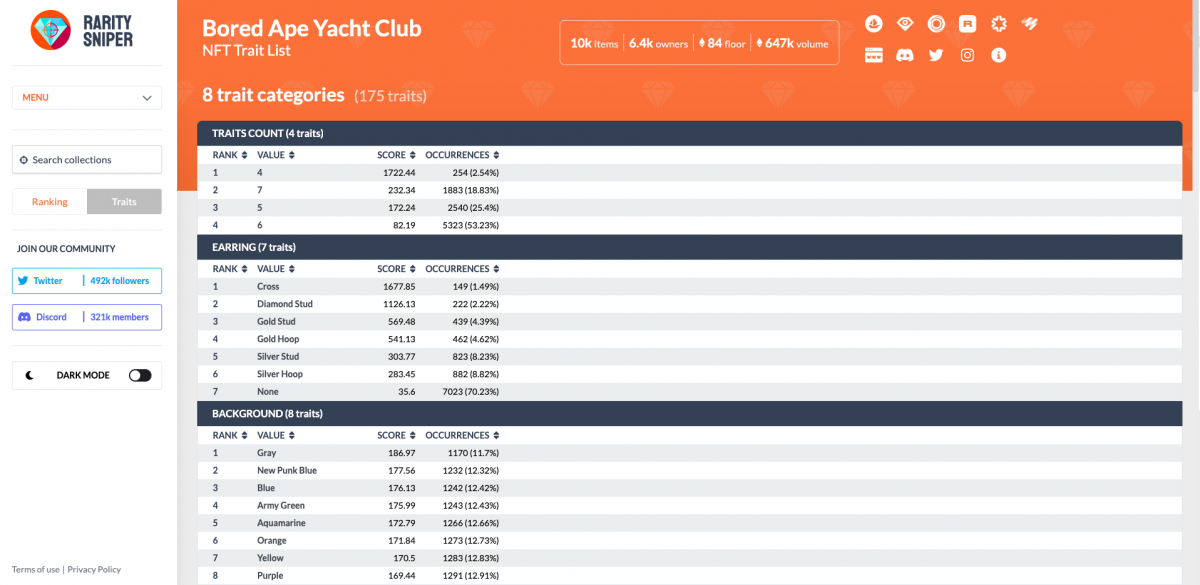
To find the ranking of a specific token, first locate the token ID within the details section of an individual NFT listing on OpenSea (or any other marketplace), as shown in the image below.
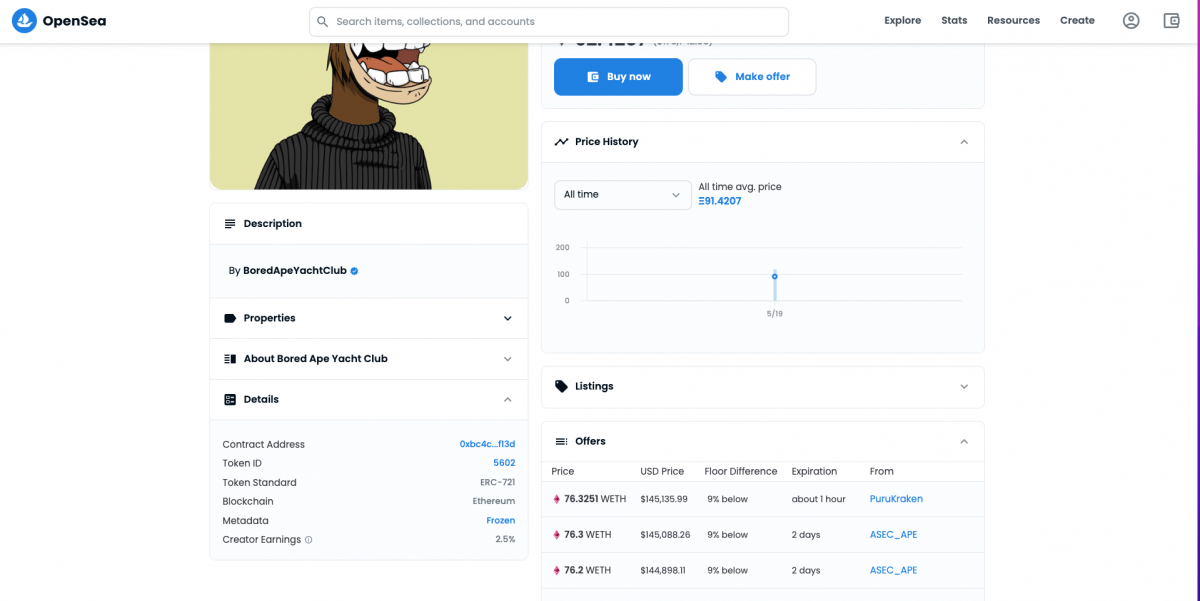
Next, simply type the Token ID into the “Check Your NFT” field and click “Check.”

The search will return your individual token, which you can then click on to reveal a full breakdown of each trait and its scarcity within the collection, along with the token’s assigned rarity score and ranking.
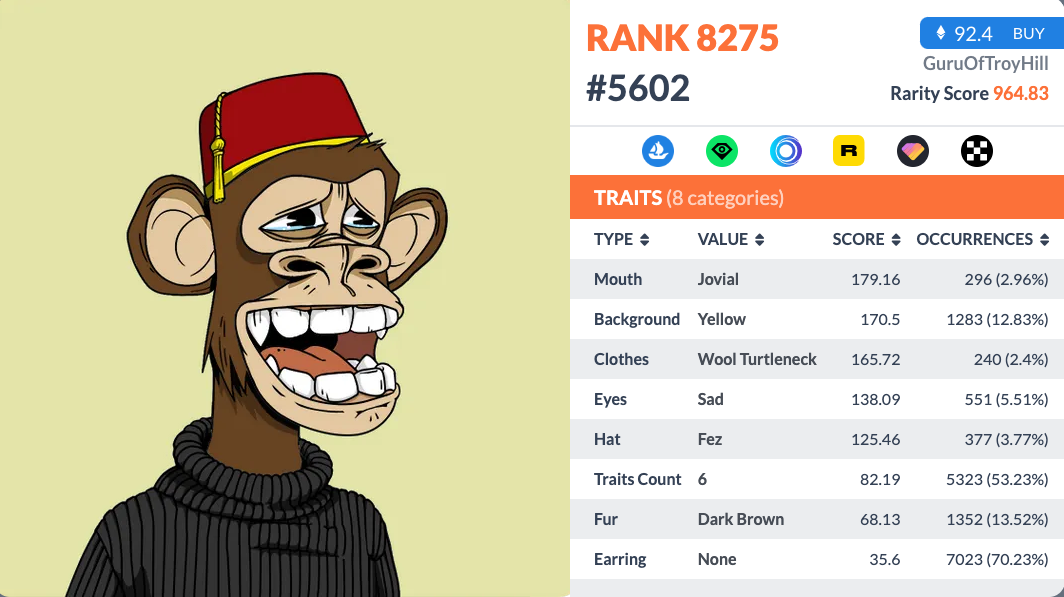
It’s important to note that while all rarity tools have similar core functionalities, there are nuances with both designs and features, so the user experience may not be identical. We highly encourage you to explore each tool further to find the one that best resonates with your use case.
Rarity Tools You Need to Know About
Rarity Sniper
As shown in the example above, Rarity Sniper is one of the market’s most robust and widely trusted Rarity Tools. With a loyal community of more than 492,000 Twitter followers and 321,000 Discord members, the platform boasts the details of nearly 1,800 NFT collections across 18 different blockchains. As the self-appointed “#1 Source for NFT Rarity,” the platform aims to be bigger than just rarity tools, providing users with a full analytics platform, news outlet, and drop calendar to stay up-to-date on the fast-paced industry.
Rarity.tools
Unlike Rarity Sniper, which gives a singular Rarity Score, rarity.tools allows collectors to filter by all four different calculation methods. It also enables users to explore specific attributes that platforms like Rarity Sniper don’t provide. While rarity.tools is one of the most popular tools among enthusiasts, the UI is a bit clunkier and harder to navigate.
The collector Swaggy Z acknowledges the somewhat antiquated design of Rarity Tools, but its simplicity has helped him better understand key purchasing opportunities across certain collections. “While there are other trading analysis tools with more features, Rarity Tools is perfect for users who are only focused on rarity information. It does exactly what it needs to do.”
Trait Sniper
Trait Sniper, which dubs itself “The Ultimate NFT Trading Platform”, is one of the market’s most comprehensive NFT trading tools. Its bot detects art and instantly reveals and delivers full rarity rankings within 30 seconds. Users to filter by trait, rank, and price while setting mass bidding parameters. Trait Sniper also has its own Chrome extension to help users find rankings and floor prices while browsing on OpenSea. Lifetime access passes can be purchased on the secondary market on OpenSea.
For Mikio Crosby, the founder of NFT Buy-Now Pay-Later platform Cyan, Trait Sniper has become his go-to resource for analyzing rarity, ranking, and more. After playing around with various tools on the market, Trait Sniper’s user experience reigns supreme.
“The way NFTs are displayed in spreadsheet format, which makes it easier to scroll through,” he said in an interview with nft now. “The sorting for each category makes it easy to compare on the fly and filter by conditions when necessary. The UI can look intimidating at first, but once you get over the small learning curve it becomes a powerful tool.”
icy.tools
The all-in-one NFT analytics platform icy.tools is designed to help traders make more informed and educated decisions. Founded in 2021, it quickly emerged as the go-to resource for many serious traders, largely due to its premium plan with real-time charts and data, favorites, and firehose feeds.
Ultimately, says Crosby, it boils down to personal preference and trader needs.
“Those wanting to be quick in identifying NFTs which haven’t claimed an airdrop would probably be better suited for Trait Sniper as you can quickly glance through the collection in table format.” he said. “Icy.tools has the most appealing UI, though it gatekeeps a lot of useful features. Trait Sniper has the best comprehensive analytics, but is slightly harder to use without clicking around. NFTScan has the best top-down market overview, but lacks screening for wash trading. CryptoSlam does a better job of this but is not always up to date.”
By now, you should have a foundational understanding of NFT rarity and the different tools on the market. But remember, NFT rarity isn’t a one size fits all game. There’s nuance to each collection and its specific tokens, and the industry is young. Utility is constantly being built into programs, where previously “common” traits can now command additional value. To become a more informed trader and collector, one must learn the ins and outs of the industry. These tools only help crack a small piece of the puzzle. What you choose to do with them is ultimately up to you.
The post Rarity Tools Explained: A Guide to Ranking Rare NFTs appeared first on nft now.

